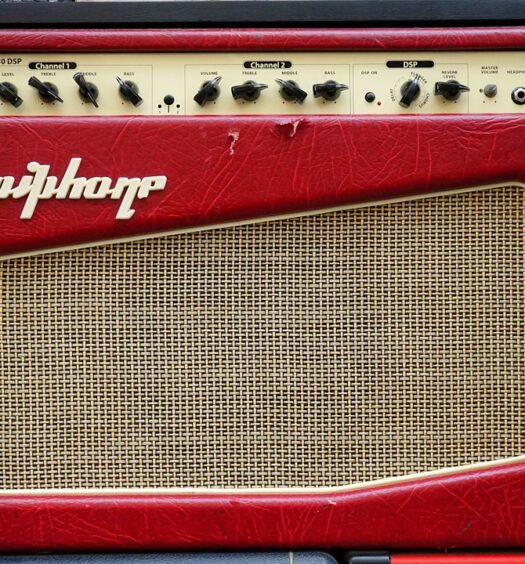Building your own hammered dulcimer is a fun and rewarding project. And in this guide, we will walk you through every step of the process. In addition to teaching you how to build the instrument from scratch, we will also provide tips on choosing materials, setting up your workspace, and building your dulcimer.
Whether you’re a beginner or an experienced woodworker, we hope that this guide to building a hammered dulcimer has something for everyone!
Step 1: Choose Your Materials
The first step in building a hammered dulcimer is selecting the right materials. In general, you will need wood for the sides, internal braces, soundboard, and trim.
The soundboard is typically made from spruce, cedar, birch, or mahogany. Spruce is a popular choice of wood for soundboards, as it is strong and produces a loud, bright tone. Mahogany soundboards are also favored by hammered dulcimer builders.
The frame sides and internal braces within a hammered dulcimer can be constructed from a variety of different woods, although maple is often used.
When choosing the type of wood for your hammered dulcimer, some consider different types of wood to offer different acoustic qualities. Appearance is also an important consideration. For example, mahogany has a beautiful dark finish that would look great as a soundboard on any hammered dulcimer, while maple impacts a lighted, more cheerful tone.
So take some time to think about what you want your dulcimer to look like and sound like, and then choose the right materials to make your vision a reality.
Step Two: Set Up Your Workshop
After selecting your materials, it’s time to set up your workshop. This is where you will be doing all of the actual construction work on your hammered dulcimer. In order to make things easier, it’s a good idea to dedicate a specific area of your workshop to woodworking projects. This can be as simple as putting down a few sheets of plywood on the floor or setting up a small workbench in a corner of the room.
If you’re working with power tools, be sure to read the safety instructions carefully and follow all of the safety precautions. It’s also important to wear proper safety gear, such as goggles and a dust mask when working with wood and around sawdust.
When building a hammered dulcimer, several pieces of equipment are recommended. Woodworkers may already have access to several of these tools in their workshop. While you certainly don’t need all of these tools to build your first hammered dulcimer, having these will make the job easier.

Suggested tools:
- Table saw
- Clamps
- Chisel
- Power drill (ideally a bench top drill press with vice)
- Double edge hand saw
- Coping saw
- Compass
- Jig saw
- Router
- Rubber mallet
- Hand plane
- Tuning wrench
- Level
In addition to the above tools, you will need the following materials (in addition to the wood you selected for construction of the actual instrument):
- Tape
- Tracing paper
- Plastic dowels
- Wood dowels
- Wood glue
- Polyurethane
- Varnish
- Felt
- Fine grit sand paper
- Ruler
If this is your first hammered dulcimer project, we recommend watching a video on how to build a hammered dulcimer to provide background. While anyone can build a hammered dulcimer from scratch, it does require some degree of precision to ensure good sound quality.
Below is an excellent video produced by master craftsman Aaron Wolff, who builds a 5 octave, 19/18/6 hammered dulcimer from scratch. Not only is he an exceptionally talented builder, but he is a talented hammered dulcimer player as well. The steps below generally follow the steps taken in his video.
Please support Aaron by liking his video and subscribing to his channel!
Step Three: Prepare the Frame
The first step in building a hammered dulcimer is to cut the sides for the frame. This can be done using a table saw, radial arm saw, or miter saw. If you’re not familiar with these tools, be sure to consult an expert before attempting to use them.
With the wood you selected for your hammered dulcimer, begin by cutting the frame sides to length. The frame consists of two thicker sides on the left and right – these are the pin blocks which will ultimately hold the strong pins – as well as two thinner rails on the top and bottom. Hammered dulcimers vary in size, but are generally between 30-48 inches long, 12-24 inches in width, and 2-6 inches in depth.
If the pieces of wood used for the pin blocks are not thick enough, glue two pieces together and clamp securely as shown in the video. Once the pin blocks are cut to the desired length, make cuts at the end of each pin block to create notches needed to accommodate the side rails. A mitre saw will come in handy to make the angled cuts.
Next, notches are added along the internal sides of each pin block. These notches will support the internal lateral braces. Start by laying a long ruler over the frame and mark where the notches will be made. Then, with a table saw, work back and forth to create the notches in each pin block by removing material a little bit at a time.
Finish the notches with a chisel and use sand paper to smoothen. For a 5 octave, 19/18/6 hammered dulcimer, we recommend making 8 notches on each side which will accommodate 8 internal braces.
With two pin blocks and two side rails constructed, the frame for your hammered dulcimer is complete. Now onto the internal braces.
Step Four: Make Internal Braces
In this step, you create several internal braces that fit between the top and bottom of the instrument and which fit into the notches cut into the frame above.
To start, carefully cut each internal brace to length and make the appropriate angled cuts to fit into each notch. Once the braces are cut to length, you may need to remove a fraction of a millimeter at the end of each for a perfect fit.
Once you have the braces cut to size, it’s time to drill holes along the length of each. Using a press drill, drill holes roughly 1/2” in diameter along each brace. Use a Forstner bit or spade bit for this step, making sure to keep the drill bits perpendicular to the surface of the wood. In addition to making the instrument lighter, these holes allows sound to circulate through the instrument, improving overall acoustics.
Step Five: Make Moveable Braces
The next step is to make small, moveable vertical braces which are placed on top of the lateral braces created above. Each moveable brace is made using 3/8” wood slats. Adding a thin layer of felt between two finished slats is recommended to create better final acoustics. The addition of felt provides a little bit of give, which help to create a richer tone. When the braces are completed, one will be placed under each bridge and they will end up touching the soundboard.
The next step is to make space under the two frame rails to accommodate the moveable internal braces created above. Make this space by moving the rail back and forth over a table saw 3/8” in height, removing material little by little. Finish with a double edge hand saw and sand.
Step Six: Make the Back
For the back of the hammered dulcimer, use ¼” thick planks of wood. Here the choice of wood is yours, but we suggest using mahogany if this option is available to you. When attaching two planks together, try this helpful trick. Apply graphite to one edge of the plank and rub that edge against the edge of the other plank. Where graphite remains is where you need to shave off excess material so that both edges are flush with each other.
Once a perfect fit is achieved, glue the planks together. When fully dry, place the finished frame on the top and trace the outline with pencil. Carefully cut to match the dimensions of the frame using a table saw.
Step Seven: Assemble the Frame
Now, with the frame pieces completed (two notched pin blocks and two rails), internal braces and back fabricated, it is now time to assemble and glue. This can be done with a combination of clamps, screws, and wood glue.
With the frame of the instrument lying flat on a workbench, apply a layer of glue on each side and lay the back over the frame. Clamp in place and let dry. Structural dowels can be also applied in this step (as shown in the video), but this step is optional.
Next, apply glue to the back of each internal brace, set into the notches, and press down onto the dulcimer back and let dry.
When applying glue to a wood surface, we suggest smoothing out the glue with your finger to ensure a thin, even coat before joining with another wood surface. This ensures a consistent thickness which improves adhesion and reduces spillover. Once the glue is applied, be sure to apply pressure at all points using clamps and weights.
Step Eight: Install the Soundboard
The next step in building a hammered dulcimer is to make the soundboard, or top of the instrument. Repeat Step 6 using ¼” planks of the same high quality wood – in this case, mahogany. Use a jig saw to rough cut to the desired shape of the frame; we will trim the sides in a future step.
Apply tracing paper to the top of the soundboard and sketch out one or two decorative clefs. With the tip of a hobby knife or spade drill bit, mark holes through the paper through the top of the soundboard to indicate the general outline of the designs. Remove the paper. Start by drilling a hole into the soundboard, and then use a small blade (a coping saw blade works well) and chisel to finishing carving out the clef designs. Sand to finish.
Once the soundboard is completed, apply a coat of urethane to the inside of the instrument as well as to the interior side of the soundboard. This helps mitigate any potential moisture-related problems down the road due to humidity.
Next, lay the moveable internal braces to the top of the instrument across the stationary lateral braces. Apply a uniform layer of wood glue to the top of the frame and place the finished soundboard on top. Clamp and let dry. Trim the edges with a double edge hand saw and sand the top. Be sure to use a level when installing the soundboard, so that it is evenly aligned with the rest of the instrument.
Step Nine: Make the Bridges
The next step is to make the bridges. The bridges are wood pieces that separate the strings from the sound board. A hard wood, such as maple, is suggested as these will support the tension of the strings.
Start by marking 1 1/8” intervals along each bridge; these marks are where the strings will ultimately rest. With a compass, mark out circles along each bridge and drill using a drill press. Once all the holes have been drilled, cut through each hole with a saw.
Next, set the table saw at a 10-12 degree angle and carefully guide each bridge along the table saw. The idea is to remove enough material to make the bridges come up to a point. Do the same for the other side. Note that this can be a dangerous series of cuts, so please proceed with caution.
Since this is a 19/18/6 hammered dulcimer, you will need a total of 43 individual bridges. These will be spread out across three bridges – a treble bridge, a bass bridge, and a super bass bridge. For this step, it will be most efficient to create several long bridges, and simply cut them to length using a double edge hand saw.
Next, cut a plastic dowel into small pieces to fit to the top of each bridge. Apply adhesive to the top of each bridge and let dry. These will serve as the contact points for the strings.
Step Ten: Add the Trim, Pins, and Strings
In this final step in building a hammered dulcimer, we apply the pins to the pin block. Start by taping a piece of tracing paper to the top of the soundboard and indicate the location of each of the pins. Using a drill press, drill holes at a 15 degree angle away from the center of the instrument.
For the trim, rip pieces of mahogany to fit the sides of the hammered dulcimer. If desired, carve a pattern of your choosing using a small 1” chisel. Glue the trim to the sides and cut off any pointy edges. Bevel the edges with a router if desired.
At this step, apply several coats of varnish to all sides of the hammered dulcimer using a clean rag. The dulcimer builder featured in the video above chose to use 5 coats of TotalBoat Satin Marine Spar Varnish on all sides of the hammered dulcimer. Once the varnish has dried, lightly tap in the pins to the pin block with a hammer (a rubber mallet works best if available).

The final step is to apply the strings and tune using a standard dulcimer tuning wrench. Congratulations! You’ve built your very own hammered dulcimer!
How Much Does it Cost to Build a Hammered Dulcimer?
The cost of building a dulcimer varies depending on the type of wood you use and the tools you have access to. However, in general, you can expect to spend between $50 and $250 on materials for a standard hammered dulcimer. This does not include the cost of workshop tools.
In case you were wondering, purchasing a new hammered dulcimer can cost between $200 and 300 for a student version and up to well over $2000 for a custom-built instrument. So if you’re looking for a cheaper option, building your own dulcimer is definitely the way to go!
How Long Does it Take to Build a Hammered Dulcimer?
The time needed to build a hammered dulcimer will vary based on your experience level, the finish quality, and the amount of time you want to dedicate to the project. You can choose to build your dulcimer all at once, or divide it into parts and make progress only a little at a time.
With the proper tools, building a hammered dulcimer can be accomplished in a single weekend. However, for those looking to take their time to build a more precision instrument, allow at least 1-2 weeks.
Is Building a Hammered Dulcimer Hard?
Building a dulcimer is definitely not an easy task, but it’s also not as difficult as some people might think. If you’re familiar with basic woodworking techniques and have access to the right tools, then you should be able to build a simple hammered dulcimer as a weekend project.
However, if you’re new to woodworking or don’t have access to power tools, then it will likely take longer to complete the project. In either case, be sure to take your time and read through the instructions carefully before starting construction. It may also be handy to have a friend with woodworking experience work with you as they will know how to stay safe while working efficiently with woodworking tools.
Where to Buy Wood for a Hammered Dulcimer?
If you’re looking for quality wood to build your dulcimer, there are a few different places you can go. Local lumberyards and home improvement stores usually carry a variety of woods, but the selection may be limited. Alternatively, you can order wood from online suppliers or specialty stores. We recommend specialty stores that cater to hobby enthusiasts.
When selecting wood for your dulcimer, it’s important to choose a hardwood that is both durable and tonally resonant. Some good options include maple, walnut, mahogany, rosewood, birch, or even oak. Be sure to avoid using softwoods such as pine, as they will not produce a desirable tone quality.
We have found that Rockler is an excellent source of fine quality wood for instruments and other hobby needs.
What Kind of Strings Does a Hammered Dulcimer Use?
Hammered dulcimers typically use light gauge strings, which can be either metal or nylon. Nylon strings are typically a bit easier to play and tend to produce a mellower sound than metal strings. You can find strings for your hammered dulcimer at most music stores or online.
Final Thoughts
Hopefully this guide will provide you with enough information to get you going on your next hammered dulcimer project.
Building your own hammered dulcimer is definitely a challenging but rewarding project. Not only will you end up with a unique and custom-made instrument, but you’ll also have a deeper understanding of how it works. So if you’re looking for a new hobby or want to try your hand at woodworking, building a hammered dulcimer is the perfect way to get started!
Interested in learning how to build your own psaltery? Check out our post here.




